Recommendations for the selection and use of Alumet ladders

The stepladder is a portable folding ladder. It is used for mobile access to points located at a height that exceeds the height of a person. Mini-stairs are used during construction and finishing works, in the trade industry and libraries, in production and in households, as well as in many other areas. In this article, we will consider the characteristics of Alumet ladders, as well as give some tips for choosing them.
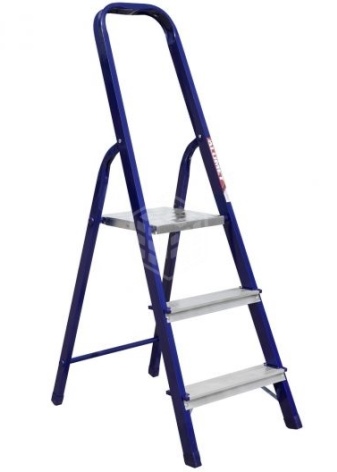
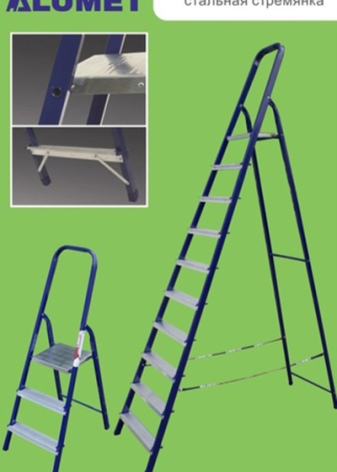
Peculiarities
Alumet ladders are manufactured using technologies that provide for a wide range of operating nuances. Stepladders are equipped with elements that ensure safety during use: belts, stiffeners, stops, anti-slip pads and many others.
The material from which they are made and its coating prevent rusting and oxidation, which makes it possible to use ladders even under aggressive conditions: under ultraviolet rays, rain and snow.
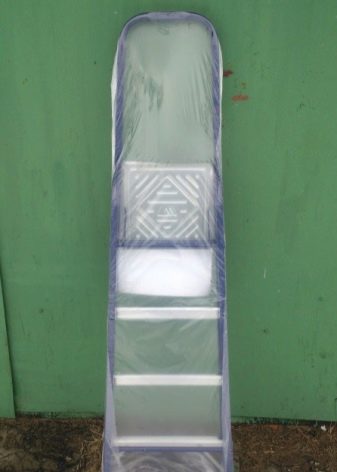

The range of such ladders includes many different modifications. Some consist of sections, one of which is equipped with steps, and the other serves as a support. Others have articulated joints that allow the ladder sections to be positioned and shaped. Still others combine the characteristics of several models at the same time. The main parameter that distinguishes Alumet ladders from each other is the number of steps. The number of steps for stairs varies from 1 to 6 on one side or more.

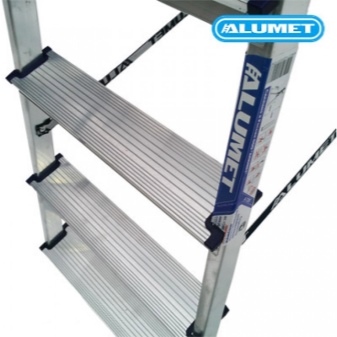
Varieties
Stepladders, identified under the Alumet brand, are widespread in the light metal household goods market. The list of manufactured models varies based on the following characteristics:
- number of steps and sections;
- sectional profile of structural elements: round, square, rectangular;
- functionality;
- material of manufacture: can be aluminum or steel.
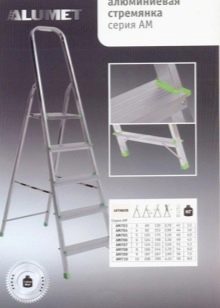

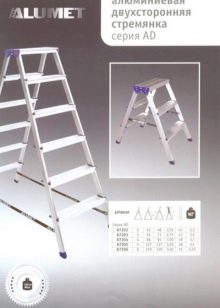
Types of Alumet stairs:
- one-section;
- multi-section;
- transformers;
- with and without a platform;
- stepladder chairs.
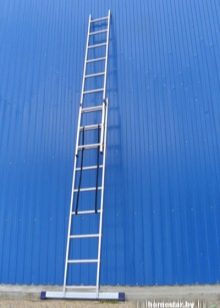

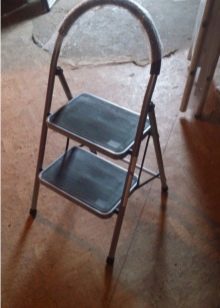
How to choose?
In order to select a suitable ladder, it is necessary to take into account a number of determining factors and the target work for which it will be used.
The primary selection parameter is the type of work in which the step-ladder will be involved. Among the most likely uses for this assistive device are:
- the implementation of construction and finishing slaves inside the premises;
- production of high-rise outdoor works: roofing, stone-laying and many others.
When looking for a stepladder for interior work, you should pay attention to the model of medium altitude.
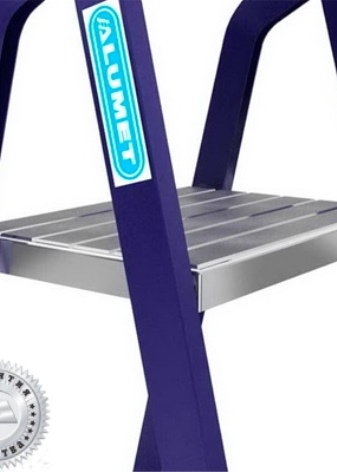
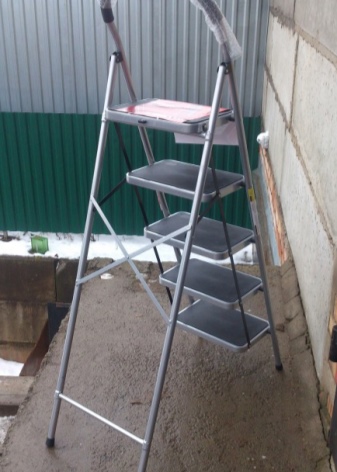
This characteristic is determined by the number of steps, the distance between them and the height of the knee support (if any). In some cases, a transformer staircase will be an advantageous solution. Its functionality allows it to be used both in rooms with a low ceiling (folded and semi-folded) and in open space.
The nature of the design of the ladder also matters: the width of the steps, the presence or absence of a supporting upper platform, the location of the steps on one or two sides. Wider leg supports allow you to expand the functionality of the ladder. Auxiliary elements can be installed on such steps.The support platform makes it possible to use the entire length of the ladder for work purposes. Usually on top of such a platform is an arcuate footrest.

If there is no need for high-altitude work, you can purchase a low-profile stepladder chair.
This type of mini-ladder is equipped with a two-sided set of steps, an upper support platform and a folding function. The knee pad is missing due to the "safe" height of the attachment.
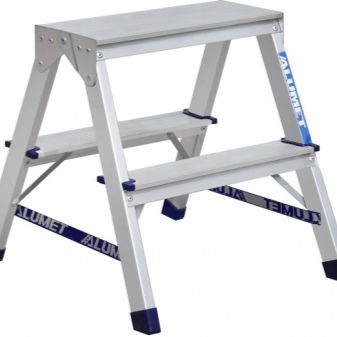
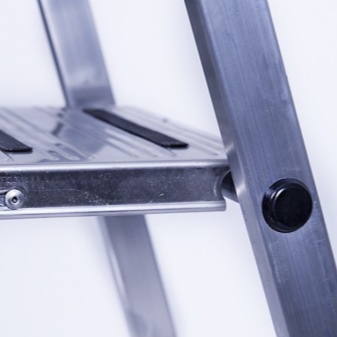
Choosing a model of a ladder in order to perform work in an open space at a height exceeding 3 meters, it is worth taking a closer look to multi-section ladders: 4x3, 4x4, 4x5, 4x6.
Their design features allow them to be adapted for use in almost any environment. The presence of hinged "knees" makes it possible to fold the ladder in whole or in part. The joints of the sections are equipped with locking mechanisms that have several locking positions.
Other ladder models are a sliding mechanism. They are transferred to the working (deployed) position using the slider. One section, attached to another, moves along it, extending to its full length. Some modifications of such ladders are equipped with mechanisms that allow fixing the extension of the section not only at the end points, but also at the intermediate ones. This expands the functionality of ladder height adjustment.
Three-section ladders are ideal. Their design provides for the optimal combination of functions of several models: two-leaf and sliding. This ladder is versatile and professional. It can be used both indoors and outdoors.
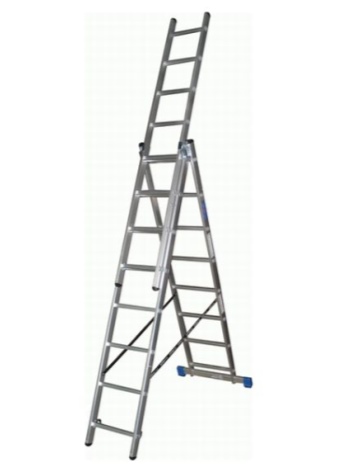
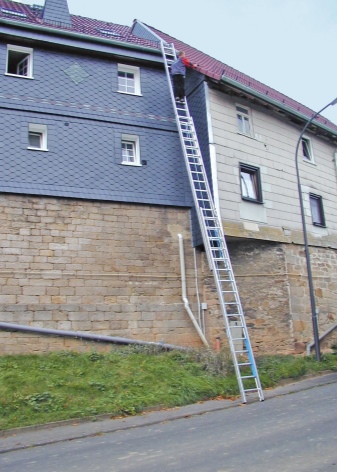
Safety requirements
When choosing a ladder, you need to pay attention to how much its design meets safety requirements. A real Alumet ladder should not be wobbly, fragile or overly light. These signs indicate the low quality of the material from which it is made, as well as poor assembly. A poor-quality stepladder can cause an emergency and cause harm to human health.
Due to the use of thin-walled metal in the production of stairs, as well as the attachment of structural parts through poor-quality welded joints, the following may happen:
- deflection, separation of leg stops;
- fracture of guides and support elements;
- arbitrary folding / unfolding.
It is important to check all connections for integrity and the absence of cracks, creases. This also applies to fixing mechanisms. It is worth making sure of the reliability of their fixing factor, so that, under the influence of the load, an uncontrolled reset of the position of the latch shutter does not occur.
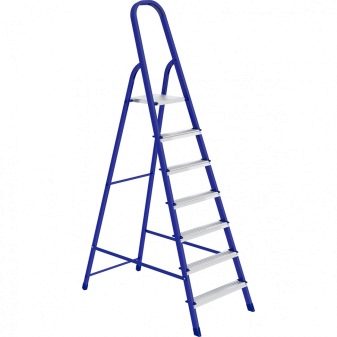
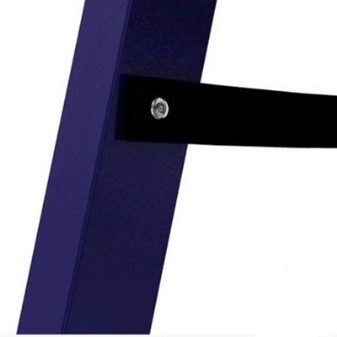
Restraining belts must be in proper condition, without tears, tightening, signs of decay of threads. Their fasteners must be reliable, firmly fixed. Original Alumet staircases - certified products that meet all safety regulations. They are easy to distinguish from a low-quality fake.

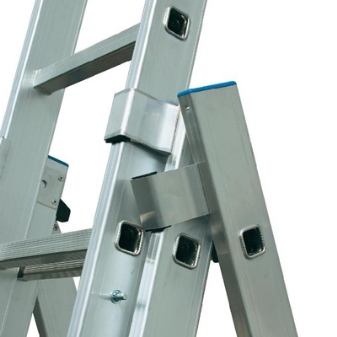
How to use?
Compliance with the rules for operating a ladder of any kind guarantees that there is no threat to the life and health of the one who uses it. As part of the correct use of the portable ladder, it is worth remembering the following:
- the admission of weight and deformation overload is prohibited;
- use on a wobbly, loose, sandy surface is unacceptable;
- do not subject the fixation mechanisms to extreme loads: impacts, breaks and others;
- it is forbidden to get up on the last 2-3 steps if the upper support platform or arcuate stop is not provided;
- it is necessary to lift and work with three points of support (two legs and one arm, or vice versa), if no additional support devices are provided.
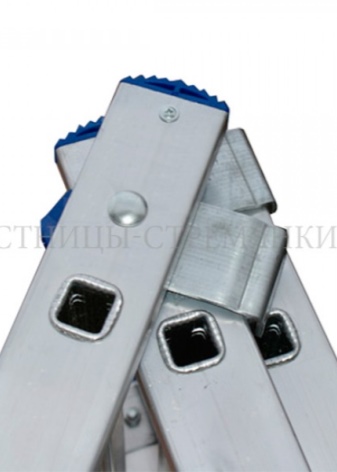
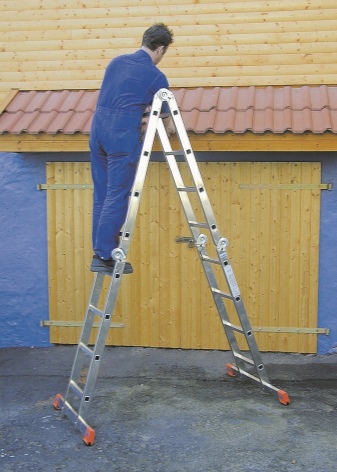
For a video review of the staircase for the Alumet summer cottage, see below.













The comment was sent successfully.